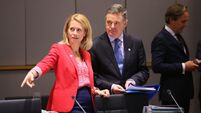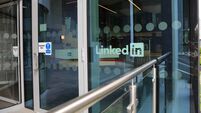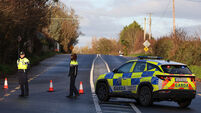Joe Gill: Broadband plan still holds the key to rural connectivity

Higher levels of local employment, young families and savvy entrepreneurs have helped create a new style of urban communities where local enterprises and internationally-focused businesses co-habit fruitfully.
Such a template cannot only be replicated but actually improved on by applying imagination towards driving forward rural town and village life in Ireland through a full-blooded embrace of technology and hard-headed commercialism.
As house prices and rents continue to march upwards in large Irish cities, the yawning gap between the cost of residential assets in urban and rural Ireland is worth analysing.
It is a hard fact a family can buy a four-bed semi detached in towns outside our major conurbations for a price 55% or more cheaper than applies in Dublin. These lower priced but identical housing assets are not on the moon.
They exist in a society with the same legal, educational, tax, and administrative system that applies in the capital. They offer individuals a chance to acquire the most expensive asset they are likely to buy at prices that offer less stress and more free cash in their pockets.
If housing costs are a problem for both employers and employees, why can that not be resolved through innovative thinking? For example, imagine a company that requires content and administration employees to service an international marketplace online.
Now, imagine locating that company in a rural Irish town where ample affordable housing is available and a sufficiently powerful broadband service either is or can be provided.
Using recent MyHome.ie data we can see an average four-bed semi in Dublin is €425,000. A similar house in Kerry, for example, is €142,000. In Cork it is €250,000 and in Waterford it is €180,000. An average among these is €191,000 or 55% below the price needed in Dublin.
We know a house is probably the largest single investment any individual will make during their lifetime, so securing a sufficiently large property at the right price in rural Ireland is a prize worth chasing.
The price differential for effectively the same asset is a whopping €234,000. Now consider a package that includes a house, access to schools, a safe healthy environment and proximity to a road network that can access an airport within 90 minutes. Such a menu can be delivered by many rural towns in Ireland.
The piece that matters most in this analysis is to secure large bandwidth broadband access.
That provides the bridge over which an employee can connect live to colleagues and makes their physical location a less troublesome variable.
I was recently shown the latest version of video conferencing, for example, which provides a remarkably live and interactive interface without delay.
Such video conferencing opens up the opportunity to facilitate high-level meetings where video engagement can be accompanied by live document and worksheet displays.
Virtual reality has already reached new heights in gaming technology so how long will it be before meetings can be held using headsets that have everyone in the same “room” despite being in remote locations?
All of this offers transformational potential for rural Ireland but it needs more energy by policymakers, politicians, and broadband providers.
By combining housing that can be built for lower costs, due to underlying land prices being less expensive, with town planners who embrace the value of broadband access for business stimulation, a local community can instigate real and positive change.
Attracting investment around such a package should be a priority for all community leaders.
Towns have the potential to become virtual online hubs that rejuvenate their local environment.













